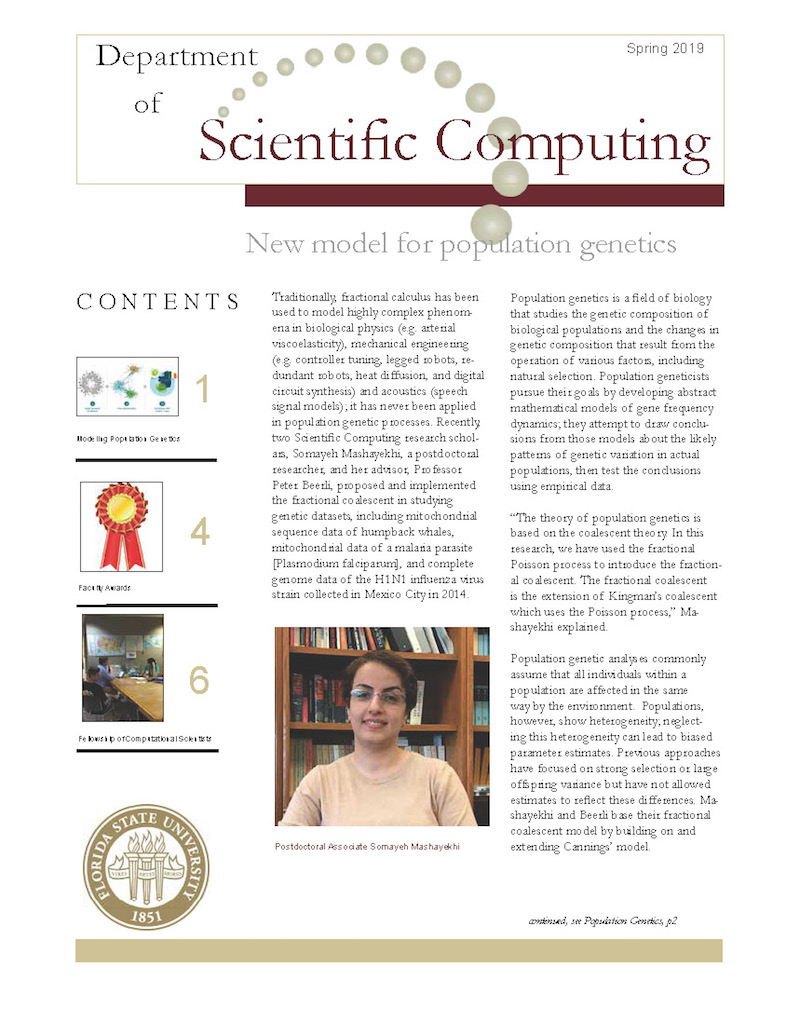New model for population genetics
Traditionally, fractional calculus has been used to model highly complex phenomena in biological physics (e.g. arterial viscoelasticity), mechanical engineering (e.g. controller tuning, legged robots, redundant robots, heat diffusion, and digital circuit synthesis) and acoustics (speech signal models); it has never been applied in population genetic processes. Recently, two Scientific Computing research scholars, Somayeh Mashayekhi, a postdoctoral researcher, and her advisor, Professor Peter Beerli, proposed and implemented the fractional coalescent in studying genetic datasets, including mitochondrial sequence data of humpback whales, mitochondrial data of a malaria parasite [Plasmodium falciparum], and complete genome data of the H1N1 influenza virus strain collected in Mexico City in 2014.


